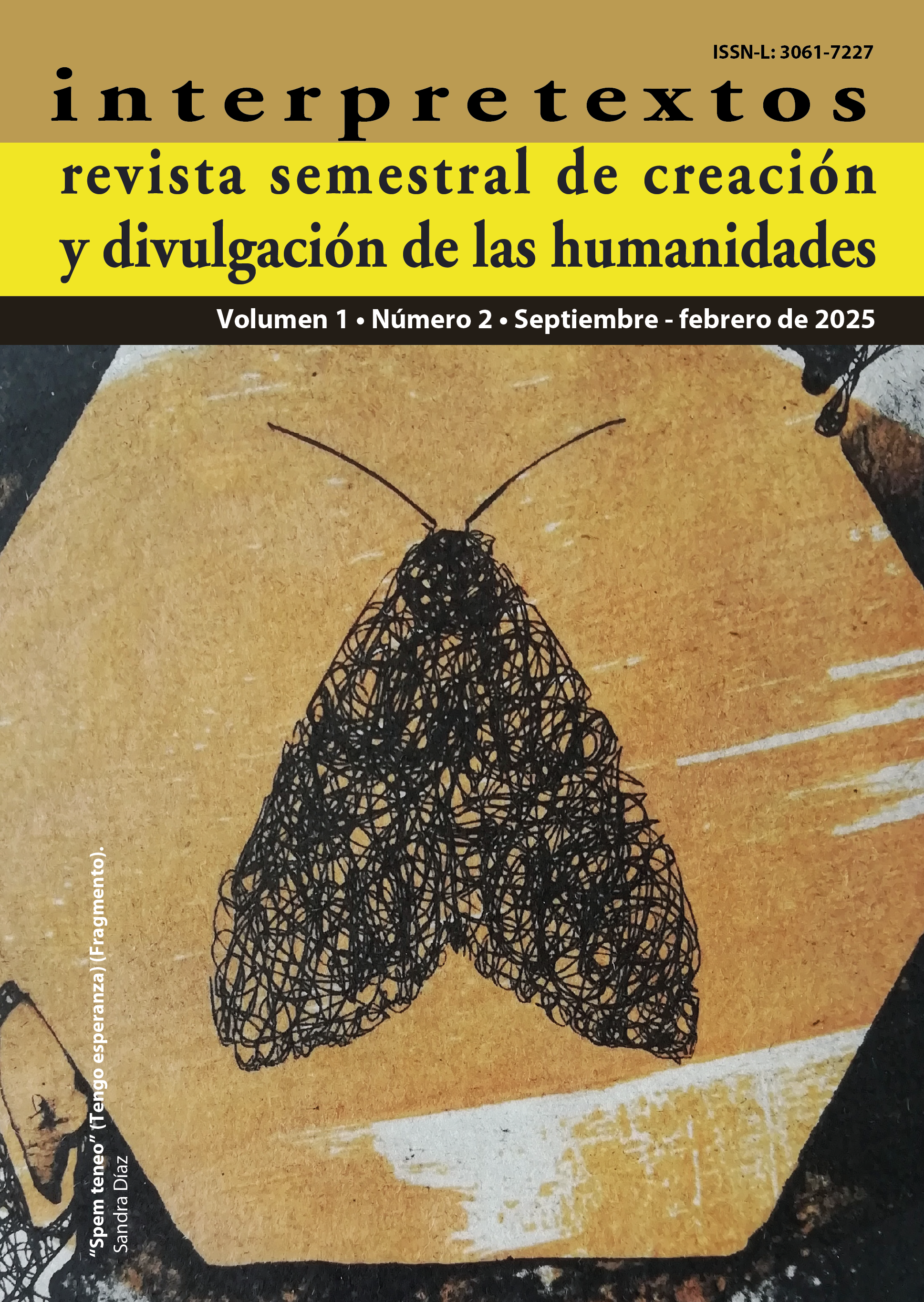The tubular structure of Roberto Bolaño’s 2666,
a game of mirrors
DOI:
https://doi.org/10.53897/RevInterp.2024.02.02Keywords:
Tubular Structure, game of mirrors, Benno von Archimboldi, autor poetic, Bolaño ArchiveAbstract
The present article aims to interpret the tubular structure conceived by Roberto Bolaño for the writing of 2666. To better understand this structure, we will draw from the book Story and Discourse (1990) by theorist Seymour Chatman. This approach will allow us to observe that the novel presents itself as a play of mirrors, with the central figure being the writer-character Benno von Archimboldi, who is reflected in his characters throughout the five parts that make up the work. Similarly, the tubular structure proposed by Bolaño in his notebooks, better known as the Bolaño Archive and taken from the edition published in 2019 by Alfaguara, will allow us to uncover the author’s poetic and theoretical proposal, in which a different approach to literature persists.
Downloads
Metrics
References
Aguilar, R. (2020). La gran novela póstuma de Roberto Bolaño, en: Animal político. https://www.animalpolitico.com/lo-que-quiso-decir/la-gran-novelapostuma-de-roberto-bolano/
Bolaño, R. (2019). 2666. España: Alfaguara.
Bolaño, R. (2018). Amuleto. España: Alfaguara.
Bolaño, R. (2018b). Poesía reunida. España: Alfaguara.
Chatman, S. (1990). Historia y discurso. España: Taurus.
Deleuze, G. y Guattari, F. (2004). Mil mesetas. Capitalismo y esquizofrenia. España: Pretextos.
Fernández, J. J. (2019). La otra América. Influencia de la literatura estadounidense en Roberto Bolaño. Universidad de Barcelona. http://www.tdx.cat/handle/10803/285532#page=1
Genette, G. (1993). Nuevo discurso del relato. Madrid: Cátedra.
Guerrero, P. P. (2020). Archivo Bolaño, 1977-2003, festín para lectores… Confabulario. El Universal. https://confabulario.eluniversal.com.mx/archivo-bolano-1977-2003-festin-para-lectores/
Ingarden, R. (1965). La obra de arte literaria. México: Taurus.
Maristáin, M. (2012). El hijo de Míster Playa, una semblanza de Roberto Bolaño. México: Almadía.
Martínez, E, A. (2020). Apocatarsis 2666. Representaciones del mal y el apocalipsis social en la novela de Roberto Bolaño. Sincronía. pp. 363-387. DOI: https://doi.org/10.32870/sincronia.axxiv.n77.18a20
https://www.redalyc.org/journal/5138/513862147018/html/
Sánchez, J. L. F. (2005). La historia como ciencia. Revista Latinoamericana de Estudios Educativos (Colombia), vol. 1, no. 1, 2005, pp. 54-82. Redalyc. https:// www.redalyc.org/articulo.oa?id=134116845005
Sanhueza, C. (2021) Roberto Bolaño. La belleza de pensar. Youtube. https://www.youtube.com/watch?v=4opmK0SO-J8
Solotorevsky, M. (2006). Reseña de “2666” de Roberto Bolaño. Aisthesis, vol., No. 39, pp. 129-134. Redalyc. https://www.redalyc.org/articulo.oa?id=163221391008
Vera Santiago, N, E. (2020). La ética de Benno von Archomboldi y la construcción ficcional del mundo posible de 2666 de Roberto Bolaño. Universidad de Puerto Rico. https://repositorio.upr.edu/handle/11721/2298?locale-attribute=es
Downloads
Published
How to Cite
Issue
Section
License

This work is licensed under a Creative Commons Attribution-NonCommercial-ShareAlike 4.0 International License.
Revista Interpretextos permite compartir, copiar y redistribuir el material en cualquier medio o formato; adaptar, remezclar, transformar y construir sobre el material, dando crédito a la obra de manera adecuada y proporcionando un enlace a la licencia, indicando si se han realizado cambios.











